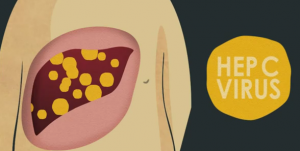Hospital admissions from hepatitis C-related end stage liver disease have risen from 608 in 1998 to 2,390 in 2012, while deaths have risen from 98 in 1996 to 428 in 2012. Liver transplants first registrations where post-hepatitis C cirrhosis was an indication for transplant have quadrupled from 45 in 1996 to 188 in 2013. These figures are released as part of the Public Health England (PHE) annual report on hepatitis C in the UK published today, World Hepatitis Day (July 28 2014).

Most recent national estimates suggest that around 214,000 individuals are chronically infected with hepatitis C (HCV) in the UK. Injecting drug use continues to be the most important risk factor, with around 50% of people who currently inject drugs thought to be infected. Also at risk are those who have injected drugs in the past, even if only once. Other people who may have been infected include those who have received blood transfusions in the UK prior to September 1991, as well as anyone who has received medical or dental treatment in countries where HCV is common and infection control may be poor.
Although antiviral treatments that will successfully clear HCV in the majority of patients are available and approved for use in the UK, only an estimated 28,000 patients in England were treated between 2006 and 2011: just 3% of those chronically infected per year.
Statistical modelling suggests that nearly 10,850 individuals are currently living with HCV-related cirrhosis or liver cancer in England, and predicts that this figure will rise to 13,590 in 2025 if low coverage of current treatments is maintained. If we could rapidly scale up standard treatment to complete coverage over the next 15 years, modelling predicts that over 4100 fewer people could be living with HCV-related liver cirrhosis and cancer by 2025.
Approximately the same reduction could be achieved by using new more effective treatments and just doubling the number treated over the next 10 years. In the best-case scenario, if rapid scale-up to complete coverage and more effective treatments were implemented, 8340 less people could be living with HCV-related cirrhosis and liver cancer by 2025. However, if standard treatments continue at their current low levels, the number of patients with severe HCV-related disease will continue to rise, resulting in loss of life and a substantial future burden on healthcare resources.
Dr Helen Harris, a hepatitis C expert at PHE, who led the publication of the report, said:
Our latest hepatitis C in the UK report highlights where national progress in tackling the infection has been made, but it also shows the scale of the challenge ahead. Transmission amongst risk groups continues and significant numbers remain undiagnosed and untreated. With many new and improved treatments on the horizon, it is increasingly important to raise awareness of the infection so that more individuals can be diagnosed and treated.
As well as encouraging more testing and treatment, there is an urgent need for better monitoring and reporting of treatment outcomes, as well as expansion of treatment into non-traditional settings, such as primary care, drug treatment centres, and prisons. Such measures must go hand-in-hand with effective prevention activity, like drug treatment and safe injecting practices for people who inject drugs, if we are to tackle hepatitis C and the disease it causes.

